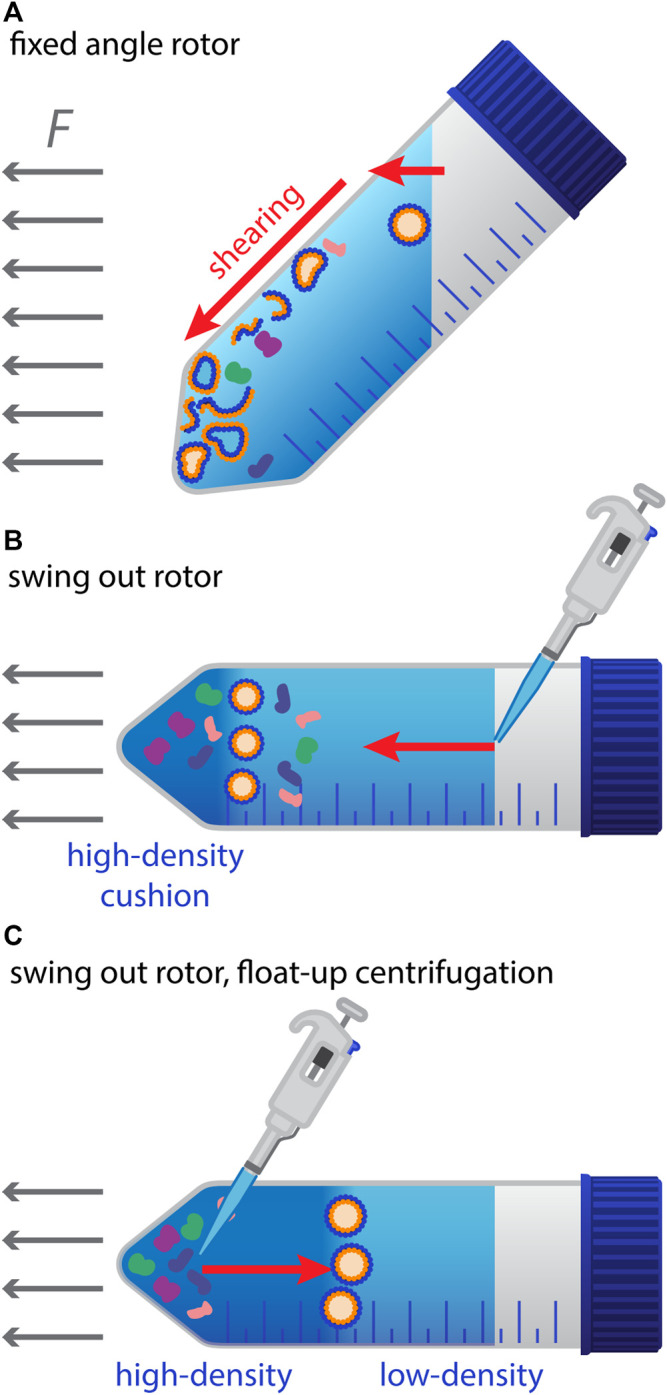FIGURE 2.

Preparation of EVs by centrifugation and potential pitfalls. (A) Illustration of the mechanical stress and shear forces that may damage EVs during high-speed centrifugation with fixed-angle rotors. EVs hitting the tube wall are squeezed and migrate along the wall to the bottom of the tube, where they form a pellet. (B) Situation with a swing-out rotor and a high-density cushion on the bottom of the tube to reduce a potential mechanical damage. (C) Float-up gradient centrifugation with a swing-out rotor: Suspensions of EVs and potential contaminating particles (e.g., after PEG-mediated precipitation) are applied to the bottom of the tube at a layer of higher density. Upon centrifugation, membranous vesicles such as EVs float up against the centrifugal force vector, until they reach a layer with lower density than their intrinsic one. Protein aggregates and other contaminants are left behind.
